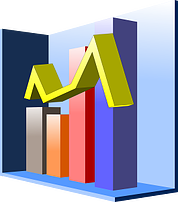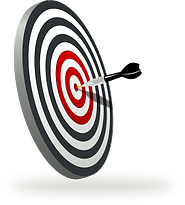Commercial buildings have complex systems, end uses, and operations making managing their energy use a challenge. “Big data” is the trend in the building energy industry, but operators do not have time to analyze operating data. We need to provide building operators with easily digestible information including:
- Target
- Performance
- Alarms
Set Targets
We need to establish useful targets that operators can see and use. These targets are a very limited number of key operating metrics, displayed graphically. Targets can include:
- Building peak demand, which will help operators minimize the impact of demand charges on the bill.
- System performance such as chiller plant kW/ton, which will help operators see when their chiller plant is using too much energy to meet building loads.
- Fan system kW/CFM, which is similar to the chiller plant target and helps the operators see the impacts of set point changes on energy use.
- For combined heat and power plants, key metrics include the overall efficiency, which captures the electric efficiency and heat recovery rate vs. the fuel input to the system, and the capacity factor (how much the plant is operating).
Track Performance
 Graphical displays should show current operating characteristics relative to the target (or maximum). Colors can help operators see when systems are moving into the red zone and approaching the operating limit. In the background management reports can be generated to show a facilities director how his/her team is doing on a regular basis against the metrics. Operator performance reviews should include discussion of the key metrics and their performance relative to managing systems within spec.
Graphical displays should show current operating characteristics relative to the target (or maximum). Colors can help operators see when systems are moving into the red zone and approaching the operating limit. In the background management reports can be generated to show a facilities director how his/her team is doing on a regular basis against the metrics. Operator performance reviews should include discussion of the key metrics and their performance relative to managing systems within spec.
Establish Alarms
Setting up alarms to alert operators via their cell phones when operations are approaching limits or targets is key to enabling them to monitor and manage system performance. No building operator has time to sit and stare at a screen to manage building systems. The graphical screens need to support them in understanding where they are, and diagnosing issues so that they can effectively problem solve without unknowingly sabotaging energy performance.
Customer-Facing Tools to Manage Energy Use Work and Drive Better Building Operations
One building with an ice storage system is managing peak demand as a key metric. They have a large screen on the wall in their operations room showing their maximum allowable peak demand for their half-million square foot facility. In order to manage to peak, the operators have developed an understanding of how all loads in the building contribute. They noticed that at 3:30 in the afternoon in the summer was when they were setting peak and dug into understanding what factors were driving the peak. It turns out all of the elevators in the building were active during that period and driving peak as workers went outside for cigarette breaks. In order to reduce impact on peak, the operators shut down one elevator in each bank during that time meaning people had to wait a little longer for the elevator, but the building peak electric consumption stayed well below the target.
The Barriers
There are some key barriers to advancing this approach for building performance. There are a lot of systems out there that seem to provide this type of service. The challenge can be to find and implement a simple system that makes the data useful. Submetering of energy use and loads at the major equipment level will enable performance metrics for the key systems. This costs money and involves programming in order to obtain useful targets, tracking, and alarms. Operators may resist having performance metrics at first. Once they learn how to use the metrics to manage the building, and as long as the metrics make sense and are realistic, they will come to embrace these effective tools for improving building performance.
Do you have any great examples of tools that work well to manage customer energy use by providing clear targets, tracking, and alarms for a small number of key parameters? If so, we’d like to know about them so we can build the body of evidence to continue to advance this approach to building performance optimization.




